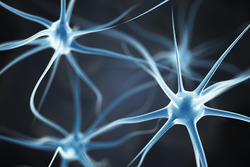Modafinil Science
In "Sleep, Waking, and Neurobehavioral Performance", published in Frontiers in Bioscience, Naomi L. Rogers, Jillian Dorrian, and David F. Dinges reported that modafinil shows fewer adverse side effects than stimulants like amphetamines. These negative consequences of amphetamines include bodily agitation and trouble sleeping when the patient is allowed to sleep. The authors admit that scientists still do not understand the mechanism of modafinil inside the body. Even after years of clinical use by thousands of patients, that appears to still be true.
Studies have shown that the Provigil improves reaction time in sleep-deprived people. It also enables people to perform better on tests of neurological behavior, including grammatical reasoning and visual search. Many of these tests were done in simulated military combat situations, and the test patients report feeling less sleepy when they have taken the drug.
One aspect of studies like these is that there is both an objective and a subjective component to cognitive performance, and both are measured in sleep studies. modafinil appears to improve wakefulness in both components.
Compared to amphetamines, modafinil results in less of a disturbance in sleep during the “rebound” period after the drug wears off and the person resumes natural sleep. The duration of required recovery sleep is also less. Negative effects of the drug include decreased efficiency of communication, and possibly subjective estimates of cognitive ability (by the person on the drug.)
Neuroscience research suggests that modafinil affects "gap junctions" between neurons. The electric aspects of the brain are still being determined.
Provigil’s full name is 2-[(diphenylmethyl)sulfinyl] acetamide. Molecular formula is C15H15NO2S.
Modafinil’s mechanism of action is undetermined, although it is known to be different from that of central nervous system stimulants. It does not act as a direct or indirect dopamine receptor agonist. It does not bind to receptors for dopamine, serotonin, GABA, or norepinephrine uptake. It does not appear to alter the release of dopamine or norepinephrine, it may exert its stimulant effects by decreasing GABA-mediated neurotransmission.
New
research from South Korea shows that in narcoleptic patients, modafinil
use increases cerebral blood flow in the bilateral prefrontal cortices
and decreases blood flow in the left mesio/basal, temporal, bilateral
occipital areas, and in the cerebellum. Studies suggest that an intact
central alpha-adrenergic system is required for modafinil's activity.
Mechanism of Provigil in the body
Provigil has a safer side-effect profile than other psychostimulants
Different Kind of Stimulant
